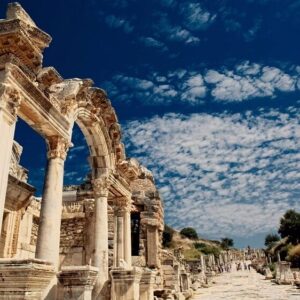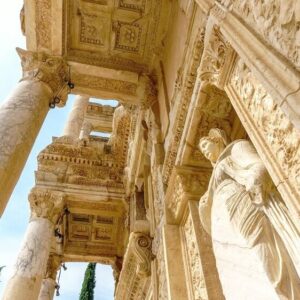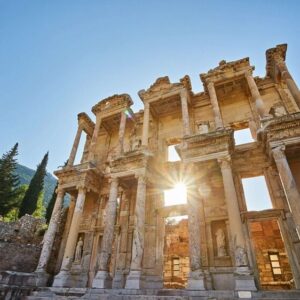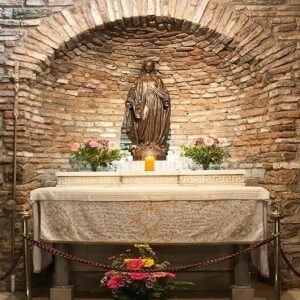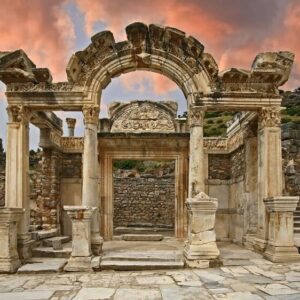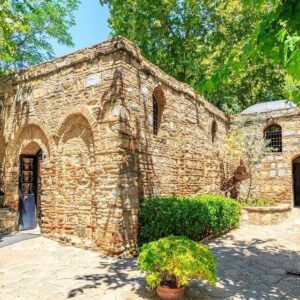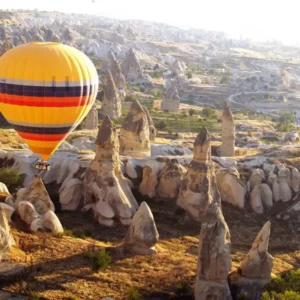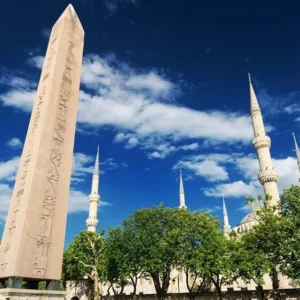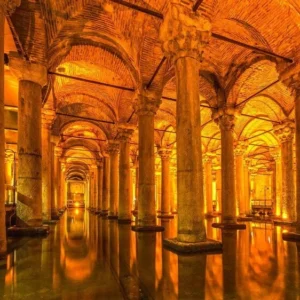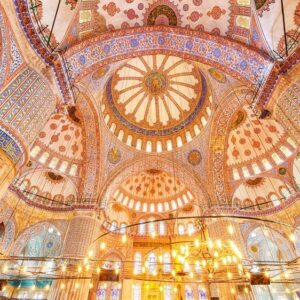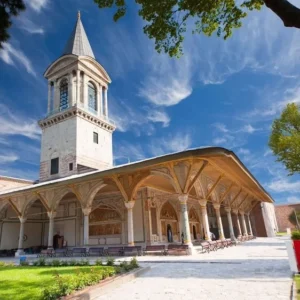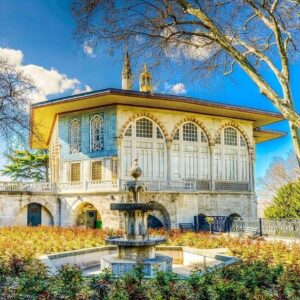Best Times to Visit Turkey by Region – Highlighting Seasonal Attractions in Istanbul, Cappadocia, Ephesus, and Pamukkale
Turkey is a country of diverse landscapes, rich history, and distinct regional climates, making it a year-round destination.
Whether you’re planning to explore the bustling city of Istanbul, marvel at Cappadocia’s otherworldly landscapes, step back in time at Ephesus, or relax in Pamukkale’s thermal pools, choosing the right time to visit can enhance your experience.
In this guide, we’ll break down the best seasons to explore each region and highlight their seasonal attractions.
Overview of Turkey’s Climate and Seasons
Turkey experiences four distinct seasons:
- Spring (March to May): Pleasant temperatures, blooming landscapes, and cultural festivals make this one of the best times to visit most regions.
- Summer (June to August): Hot temperatures, especially in inland areas, but coastal regions remain popular due to the Mediterranean and Aegean breezes.
- Autumn (September to November): Mild temperatures, fewer crowds, and stunning autumn colors create an ideal travel window.
- Winter (December to February): Snowfall in central and eastern Turkey provides a unique charm, while coastal areas remain relatively mild.
Best Time to Visit Istanbul
Istanbul, a vibrant city where East meets West, offers unique experiences in every season. However, some periods are more comfortable for sightseeing than others.
Spring (March to May) – Blooms and Festivals
Spring is arguably the best time to visit Istanbul, as the weather is mild, and the city’s parks and gardens come to life with vibrant flowers.
- Tulip Festival: Held in April, Istanbul’s parks, especially Emirgan Park, are filled with millions of colorful tulips.
- Pleasant Weather: Temperatures range between 10-20°C (50-68°F), perfect for outdoor exploration.
- Ideal for Sightseeing: Visiting landmarks like the Hagia Sophia, Topkapi Palace, and the Grand Bazaar is more enjoyable without the summer heat.
Summer (June to August) – Bustling City Life
Summer in Istanbul can be hot and humid, with temperatures soaring to 30°C (86°F) or more, but it’s also the liveliest season.
- Bosphorus Cruises: Take a sunset cruise along the Bosphorus Strait for a magical city view.
- Extended Daylight: Long days allow more time to explore sites like the Blue Mosque and Galata Tower.
- Festivals: Events such as the Istanbul Jazz Festival and open-air concerts bring the city to life.
Autumn (September to November) – Mild and Scenic
Autumn is an excellent time to visit Istanbul, with comfortable temperatures and fewer tourists compared to summer.
- Ideal for Walking Tours: Stroll through the historic neighborhoods of Sultanahmet and Beyoglu.
- Less Crowded Attractions: Easier access to top sights without long queues.
- Mild Climate: Temperatures range from 15-25°C (59-77°F), perfect for exploring on foot.
Winter (December to February) – Festive and Cozy
Winter in Istanbul is a unique experience, with occasional snowfall adding charm to the city’s historic sites.
- Christmas Markets: Although not widely celebrated, festive lights and markets pop up in some areas.
- Snow-Capped Landmarks: The city’s skyline looks magical under a light dusting of snow.
- Fewer Tourists: Enjoy iconic sites without crowds and find better deals on accommodations.
Best Time to Visit Cappadocia
Cappadocia, known for its fairy-tale landscapes and hot air balloon rides, offers different charms throughout the year.
Spring (March to May) – Perfect for Outdoor Adventures
Spring is the best time for outdoor activities in Cappadocia, with moderate temperatures and blooming wildflowers.
- Hot Air Ballooning: Clear skies and blooming valleys make for breathtaking flights.
- Hiking Trails: Explore the Rose Valley and Love Valley in comfortable weather.
- Wildflower Blooms: The landscapes are lush and colorful, enhancing photography opportunities.
Summer (June to August) – Warm and Bustling
While summer is a peak tourist season, early morning and late evening are the best times to enjoy the region.
- Cave Exploration: The cool interiors of the cave churches and homes provide relief from the heat.
- Sunset Views: Watching the sun set over the surreal landscape is a must-do.
- Festivals: Cultural events and art exhibitions bring added excitement.
Autumn (September to November) – Ideal for Photography
Autumn is a dreamy time for photographers, with golden hues and pleasant weather.
- Golden Landscapes: The valleys turn into shades of gold, orange, and red.
- Wine Tasting: Local wineries harvest their grapes, offering delicious tastings.
- Mild Climate: Comfortable temperatures make exploring open-air museums easier.
Winter (December to February) – A Fairytale Wonderland
Cappadocia in winter is a snow-covered wonderland, offering a unique and peaceful experience.
- Snow-Covered Fairy Chimneys: The landscape looks magical under a white blanket.
- Cozy Cave Hotels: Enjoy a warm, intimate experience by staying in a cave hotel.
- Fewer Tourists: A perfect season for budget travelers to experience tranquility.
Best Time to Visit Ephesus
Ephesus, an ancient Greco-Roman city, is best explored in cooler months due to its open, sun-exposed layout.
Spring (March to May) – Historical Exploration
Spring provides comfortable weather to explore the grand ruins of Ephesus without the scorching heat.
- Comfortable Temperatures: Ideal for walking around the ancient sites.
- Lush Greenery: The surrounding landscape is in full bloom, adding beauty to the ruins.
Summer (June to August) – Vibrant but Hot
Temperatures can reach up to 35°C (95°F), making early morning visits essential.
- Cultural Events: Various festivals and performances take place in the ancient theater.
- Early Morning Visits Recommended: Avoid the midday sun and crowds.
Autumn (September to November) – Cooler and Quieter
Autumn is an ideal time to visit Ephesus as the temperatures become more comfortable, and the crowds thin out.
- Pleasant Conditions for Walking: With temperatures ranging from 15-25°C (59-77°F), it’s easier to explore vast archaeological sites like the Library of Celsus and the Temple of Artemis.
- Harvest Season: Nearby towns host grape and olive harvests, offering local culinary experiences.
- Photographic Opportunities: The soft autumn light enhances the beauty of the ruins.
Winter (December to February) – Off-Season Charm
Though cooler, winter offers a peaceful experience with fewer tourists and lower accommodation costs.
- Fewer Tourists: Enjoy crowd-free exploration of historical landmarks.
- Budget-Friendly Deals: Flights and hotels are often more affordable during this time.
- Mild Mediterranean Climate: Temperatures rarely drop below freezing, making it feasible to explore with some layers.
Best Time to Visit Pamukkale
Pamukkale, famous for its white travertine terraces and thermal springs, offers year-round beauty, but each season brings a unique experience.
Spring (March to May) – Blooming Beauty
Spring is the perfect season to enjoy Pamukkale’s natural wonders and nearby Hierapolis ruins.
- Thermal Pools in Comfortable Weather: The travertine terraces look stunning against the backdrop of spring blossoms.
- Surrounding Nature in Full Bloom: The adjacent gardens and fields are lush and colorful.
- Moderate Crowds: Not as packed as summer but lively enough for a pleasant visit.
Summer (June to August) – Peak Season Fun
Summer is the busiest season in Pamukkale, with tourists flocking to the thermal pools and nearby attractions.
- Early Morning Visits Recommended: To avoid scorching heat and large crowds, visiting at sunrise is ideal.
- Bustling Tourist Crowds: Expect a lively atmosphere, perfect for social travelers.
- Longer Days: More time to explore the ancient ruins of Hierapolis and Cleopatra’s Pool.
Autumn (September to November) – Relaxed Exploration
Autumn offers a balance between pleasant temperatures and fewer visitors.
- Warm Waters and Cool Air: A perfect combination for enjoying the hot springs.
- Lesser Crowd Density: Enjoy the natural beauty without the hustle of peak season.
- Golden Landscapes: Autumn colors provide a stunning contrast to the white terraces.
Winter (December to February) – Tranquil and Serene
Pamukkale in winter is a quiet retreat, ideal for those seeking relaxation and photography opportunities.
- Steamy Pools Amidst Cold Weather: The thermal waters create a unique contrast with the chilly air.
- Photographic Opportunities: Capture the travertines without tourist crowds.
- Discounted Rates: Accommodations and tours are more affordable in the off-season.
Tips for Traveling to Turkey by Season
No matter when you visit, a few tips can help enhance your experience.
- Packing Essentials:
- Spring/Autumn: Light layers, comfortable walking shoes, a light jacket.
- Summer: Sunscreen, a hat, breathable clothing.
- Winter: Warm clothing, waterproof shoes for occasional rain.
- Booking Recommendations:
- Book flights and accommodations early if traveling in peak seasons (spring and summer).
- Consider guided tours in historical areas to get expert insights.
- Safety Tips:
- Stay hydrated in the summer months.
- Watch for slippery paths around Pamukkale’s terraces during winter.
- Always carry local currency, as smaller vendors may not accept cards.
Conclusion
Turkey is a destination that offers something special in every season. Whether you’re exploring the bustling streets of Istanbul, soaring above the fairy chimneys of Cappadocia, walking through the ancient ruins of Ephesus, or soaking in the thermal waters of Pamukkale, timing your visit right can elevate your experience.
Spring and autumn generally offer the best balance of pleasant weather and manageable crowds, while winter provides unique perspectives with budget-friendly options.
FAQs
When is the cheapest time to visit Turkey?
The cheapest time to visit Turkey is during the winter months (December to February), as accommodation and flight prices are significantly lower.
Is summer too hot for traveling to Ephesus?
Yes, summer can be quite hot, with temperatures reaching up to 35°C (95°F). It’s best to visit early in the morning or late in the afternoon to avoid the heat.
What is the best season for hot air balloon rides in Cappadocia?
Spring and autumn offer the best conditions for hot air balloon rides, with clear skies and mild temperatures.
Does Istanbul experience snowfall?
Yes, Istanbul experiences occasional snowfall during winter, especially in January and February, adding a magical touch to the city’s landmarks.
Are Pamukkale’s thermal pools open year-round?
Yes, Pamukkale’s thermal pools are open throughout the year, and visiting in winter provides a unique experience with warm waters amidst cold air.


